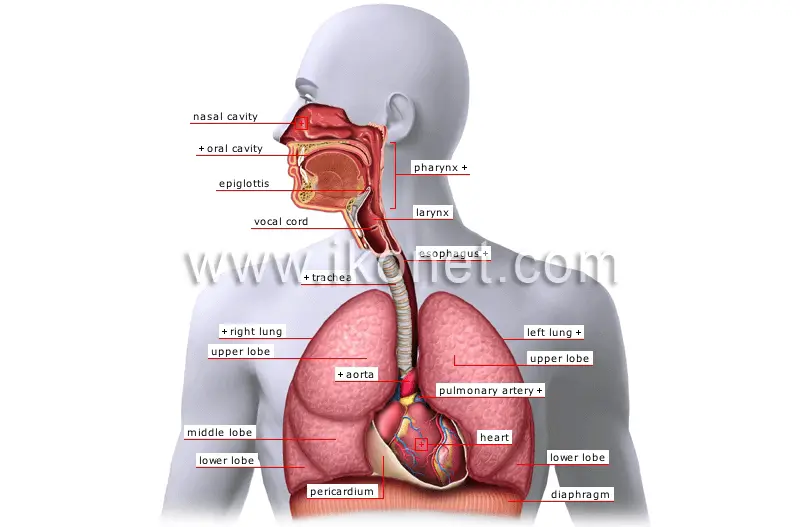Health
Diaphragm In A Human Face

The diaphragm is a muscular structure that separates the thoracic and abdominal cavities in humans. It is located at the base of the lungs and its main function is to assist with breathing by contracting and relaxing to control air flow in and out of the lungs. The diaphragm is an important part of the respiratory system and plays a vital role in keeping the body oxygenated.
The diaphragm is a thin, disk-shaped muscle that separates the chest cavity from the abdomen. It is the primary muscle used for breathing. The diaphragm contracts and relaxes to draw air into and out of the lungs.
The diaphragm is a dome-shaped muscle that lies at the base of the lungs. When it contracts, it flattens and moves downward, increasing the volume of the thoracic cavity and drawing air into the lungs. When it relaxes, it returns to its dome shape and moves upward, decreasing the volume of the thoracic cavity and exhaling air out of the lungs.
The diaphragm is innervated by phrenic nerves (C3-C5). These nerves originate from cervical spinal levels 3–5 (C3–C5) in humans and travel down to reach the diaphragm via two routes on each side. One group of fibers runs along with internal jugular vein while other group accompanies vagus nerve.[1]
The motor control for contraction originates from neurons in these cervical levels as well.

Credit: www.alamy.com
1) What is the Diaphragm in a Human Face
2) How does the diaphragm work
The human face is composed of many different muscles that work together to create expressions. One important muscle group is located around the mouth and nose area, and is responsible for opening and closing these facial features.
This muscle group is called the orbicularis oris muscle group, and its main function is to control the lips. Another key player in controlling the facial muscles is the diaphragm.
The diaphragm is a large, flat sheet of muscle that separates the chest cavity from the abdominal cavity.
It contracts and relaxes to help with breathing. When it contracts, it pulls air into the lungs. When it relaxes, it allows air to flow out of the lungs.
The diaphragm also helps to keep stomach acids from flowing back up into the esophagus (the tube that carries food from your mouth to your stomach).
So how does this all relate to facial muscles? Well, when you breathe in deeply (like when you take a big sigh), your diaphragm contracts and pushes down on your abdominal organs.
This pressure change can cause small amounts of food and stomach acid to be pushed back up into your esophagus. This can lead to heartburn or indigestion. To help prevent this from happening, your body has a valve at the top of your stomach (called the lower esophageal sphincter) that opens and closes based on changes in pressure.
When there’s more pressure in your abdomen (like when your diaphragm contracts), this valve closes so that food can’t come back up into your esophagus as easily.
Development of the Diaphragm : Human Embryology
Dirty State of Affairs
The United States is facing a dirty state of affairs. The country’s water and air quality are deteriorating, its land is being polluted, and its people are becoming sicker. The problem is only getting worse as the population grows and the demand for resources increases.
There are many causes of this dirty state of affairs. One is the way we produce energy. Burning fossil fuels releases harmful pollutants into the air and water.
Another cause is our reliance on chemicals. They’re used in everything from farming to manufacturing to cleaning products. When these chemicals get into the environment, they can cause serious health problems.
We also produce a lot of waste, much of which ends up in landfills or incinerators where it pollutes the air and water. And finally, our growing population means more people are living in areas where there’s already pollution from factories, power plants, and cars.
So what can be done about this dirty state of affairs?
We need to find cleaner ways to produce energy, reduce our reliance on chemicals, recycle more waste instead of sending it to landfill, and help people move to less polluted areas. It won’t be easy, but if we don’t take action soon, the situation will only get worse.
Conclusion
The diaphragm is a thin, dome-shaped muscle that sits under the lungs and separates the chest cavity from the abdomen. The diaphragm contracts and relaxes to help with breathing. When the diaphragm contracts, it pulls air into the lungs.
When the diaphragm relaxes, it allows air to flow out of the lungs. The movement of the diaphragm is what makes breathing an active process.
-
Cloth7 years ago
10 Free Plus Size Clothing Catalogs That You Can Request Online
-
Search Engine Optimization6 years ago
List of 100 High Authority Free Guest Blogging Sites that Bring You Success on The Web
-
Search Engine Optimization6 years ago
The Secret of Link Building Strategies That Works For Every Major Search Engines
-
Blogging2 years ago
How to Start A Blog in 2022 : Step by Step Guide for Beginners
-
Cloth7 years ago
10 Free Junior Clothing Catalogs That You Can Get at Home
-
Email Marketing6 years ago
Methods To Building Your Email List from Blogging
-
Cloth7 years ago
8 Clothing Catalogs for Women That You Can Get for Free
-
Cloth6 years ago
Free Clothing Catalogs That’ll Help You Follow the Latest Fashion Trends



























